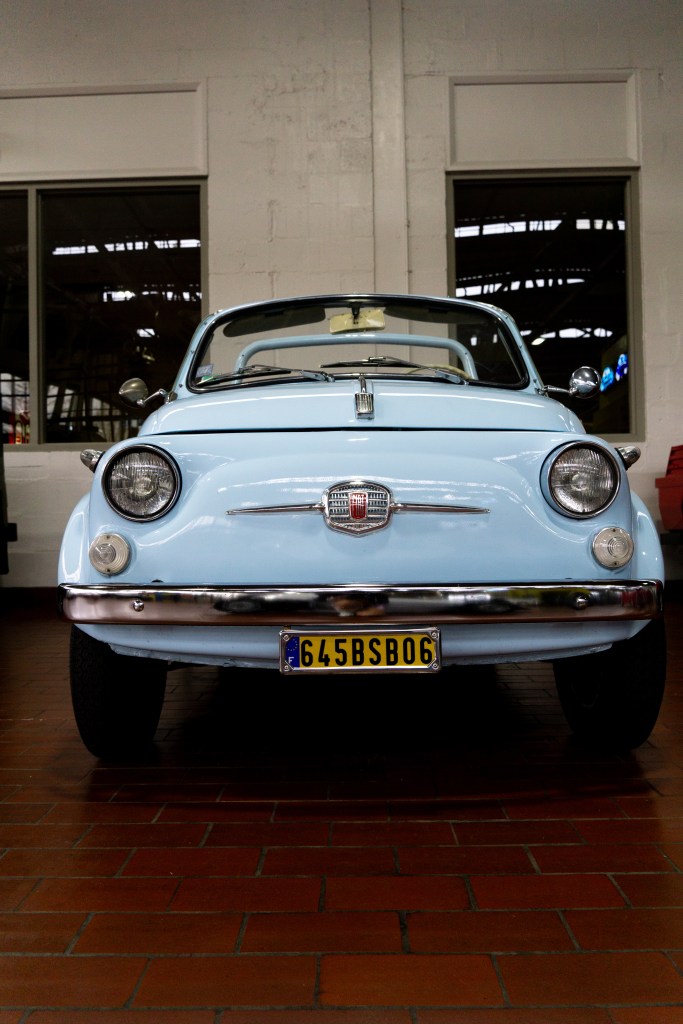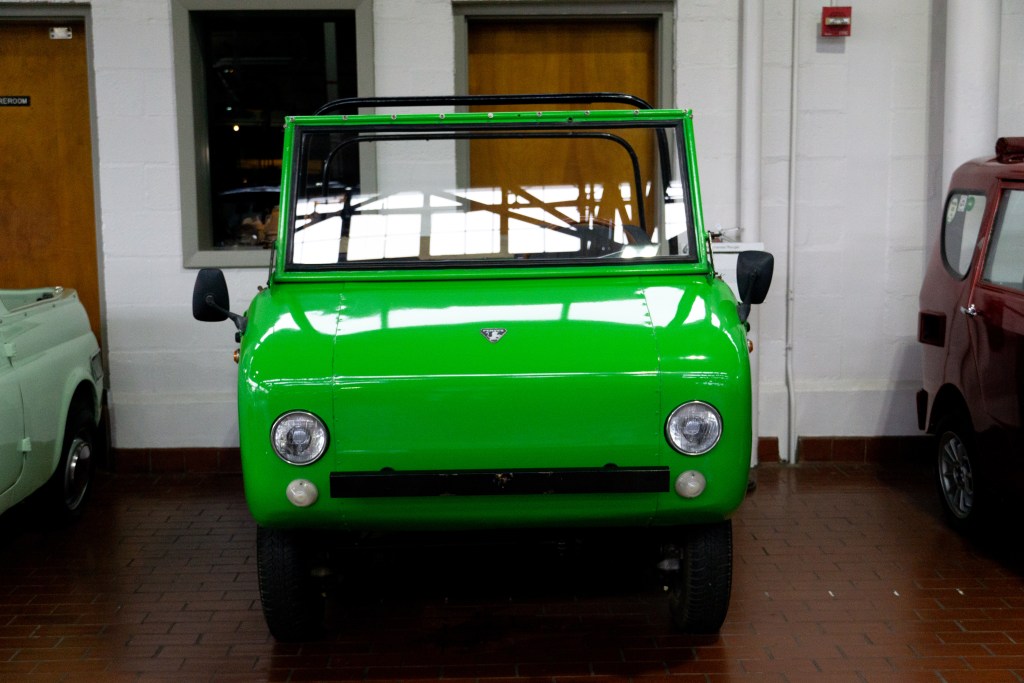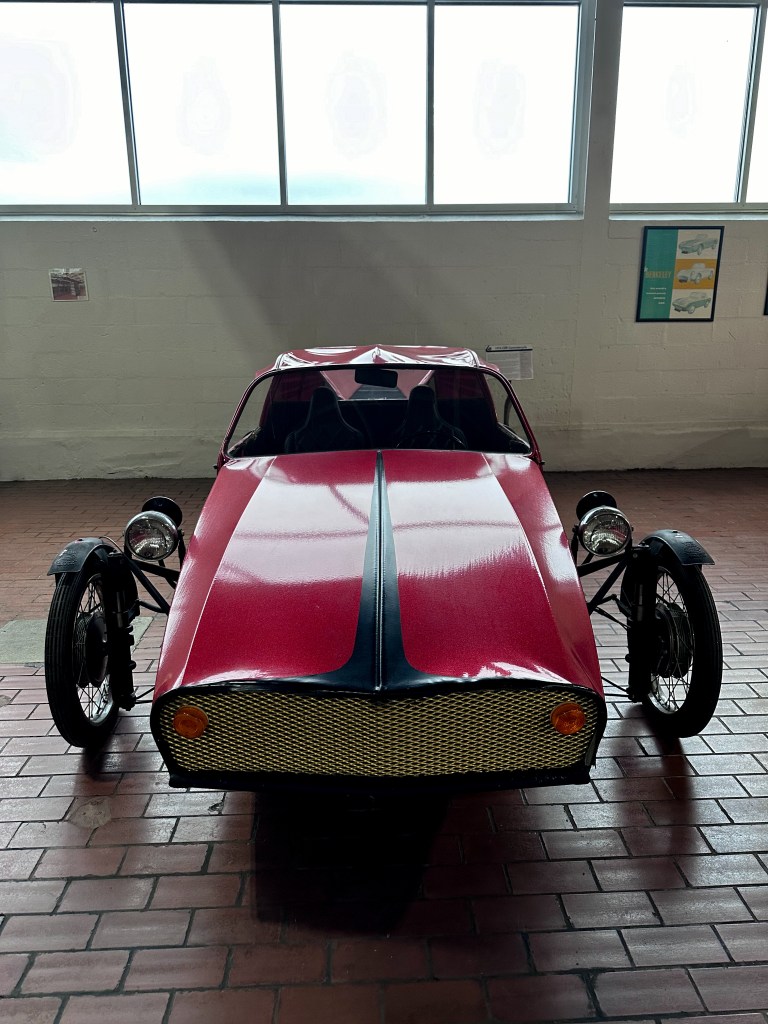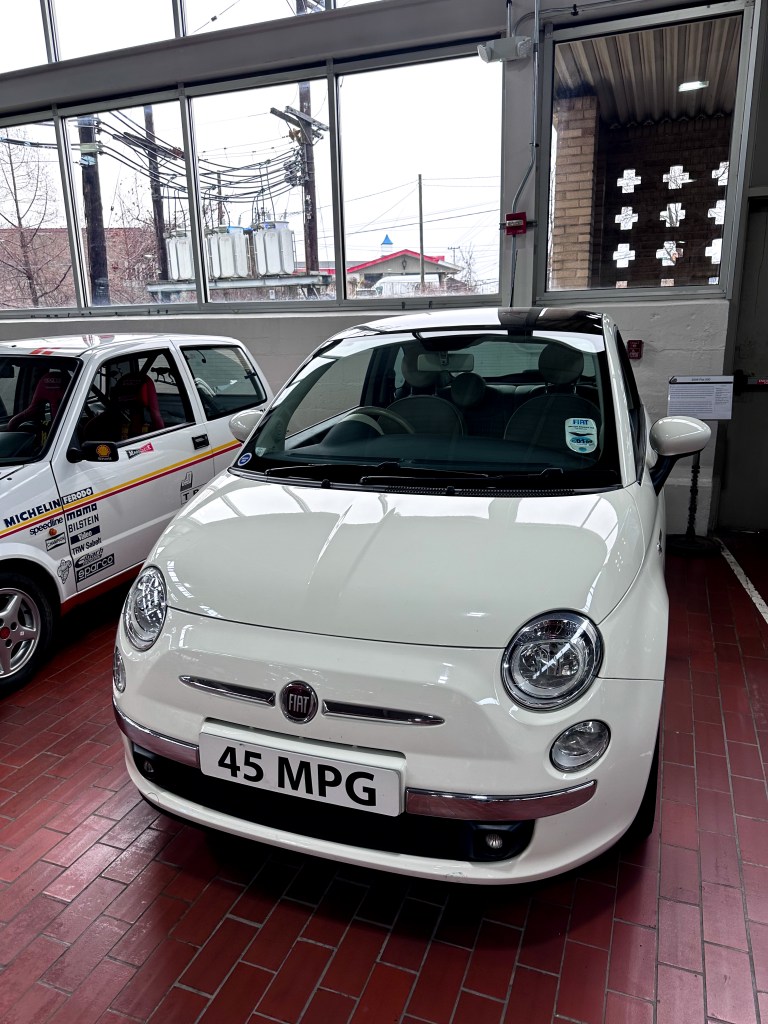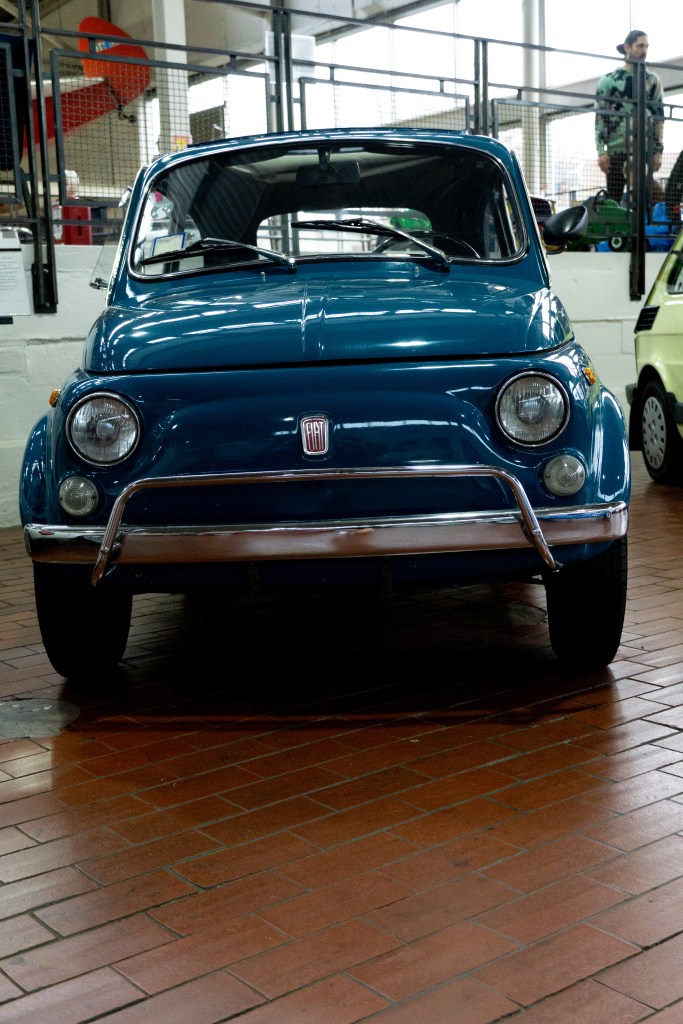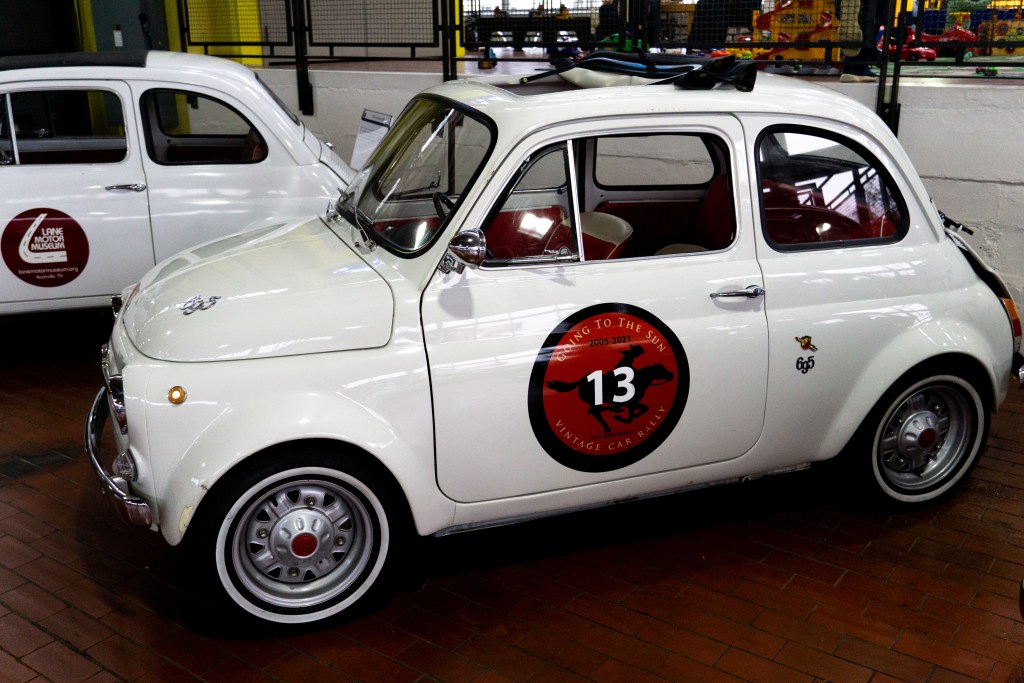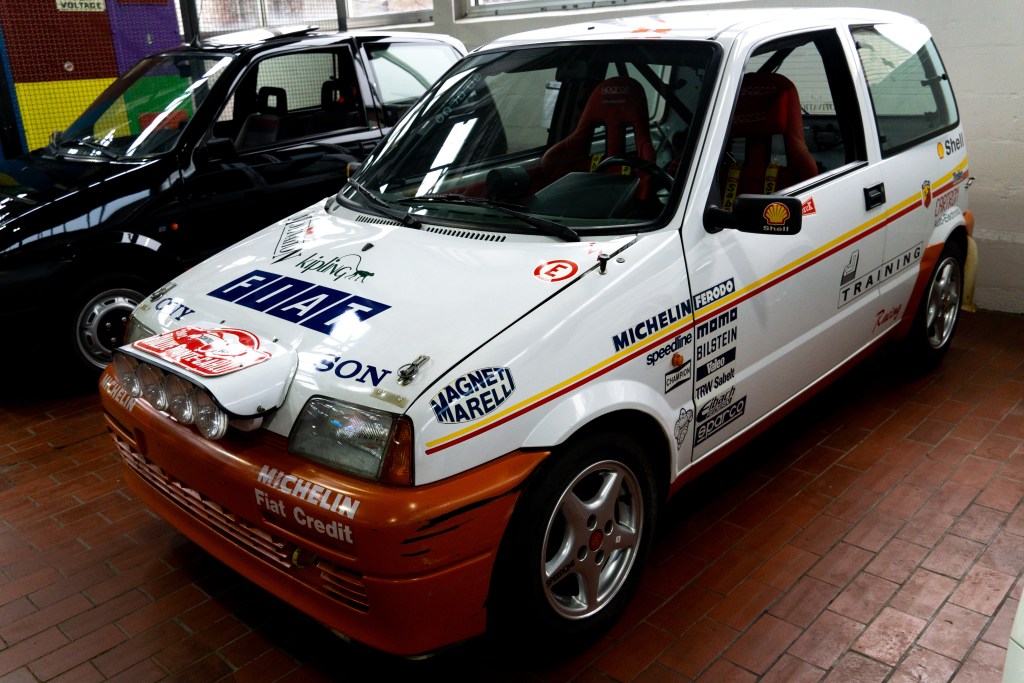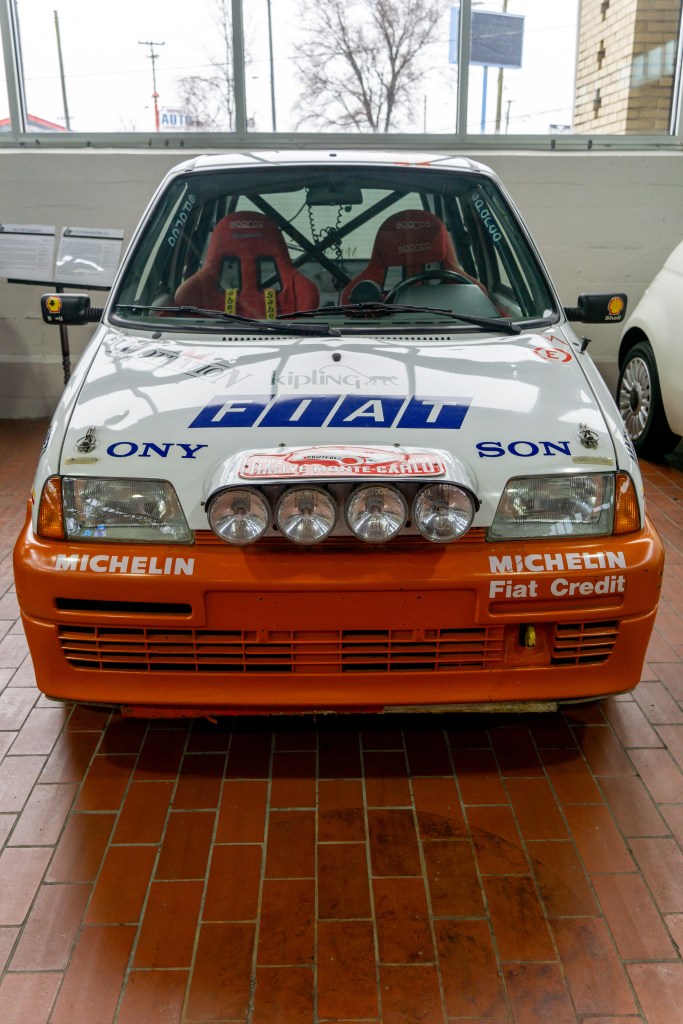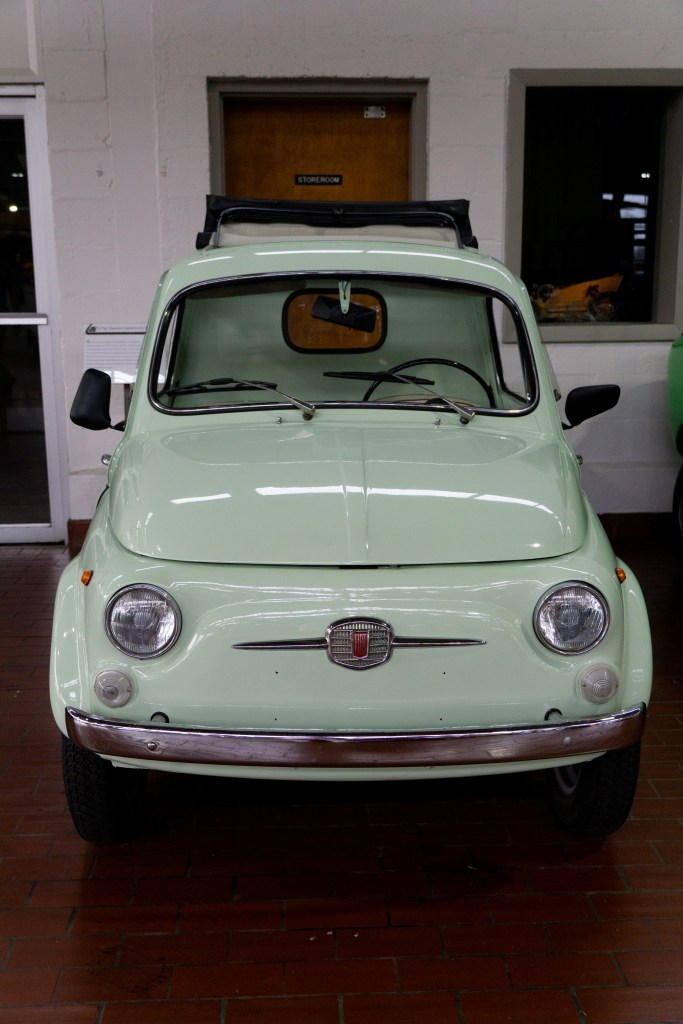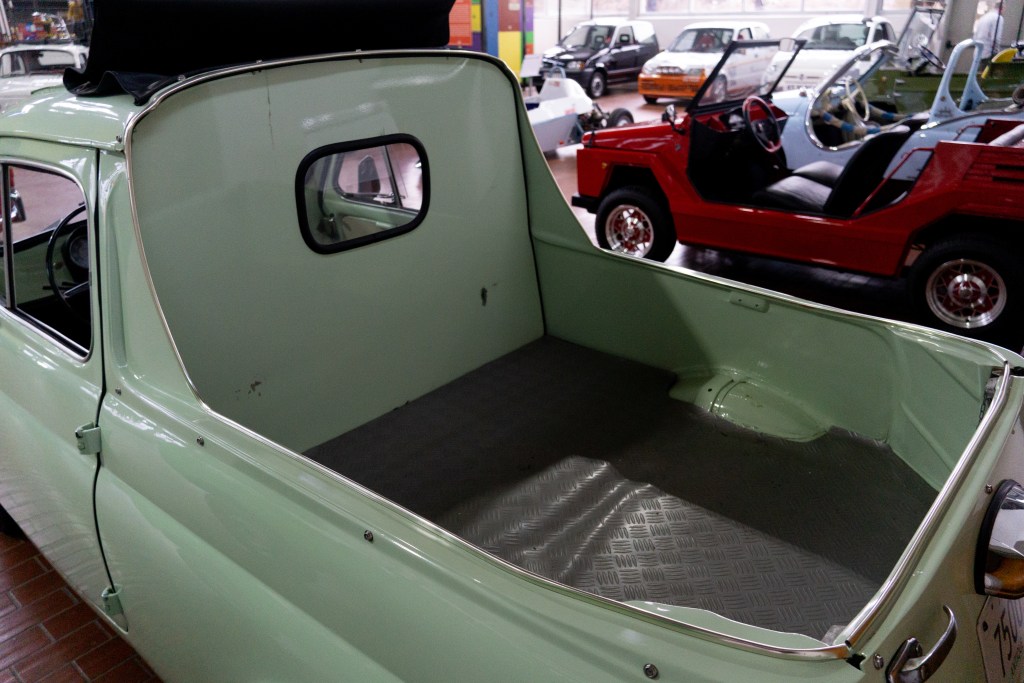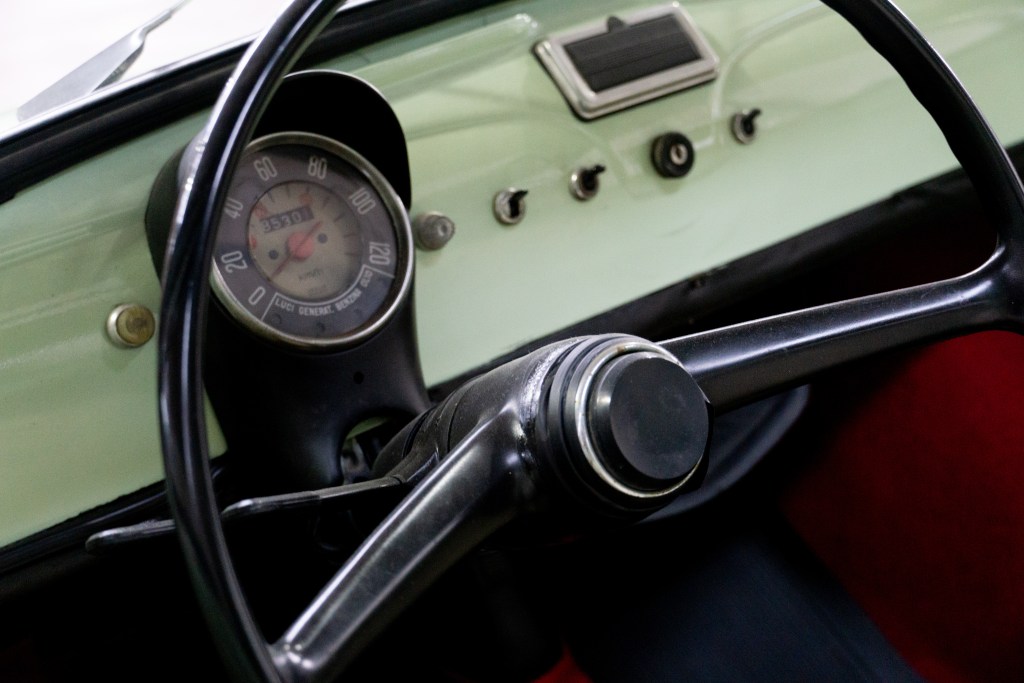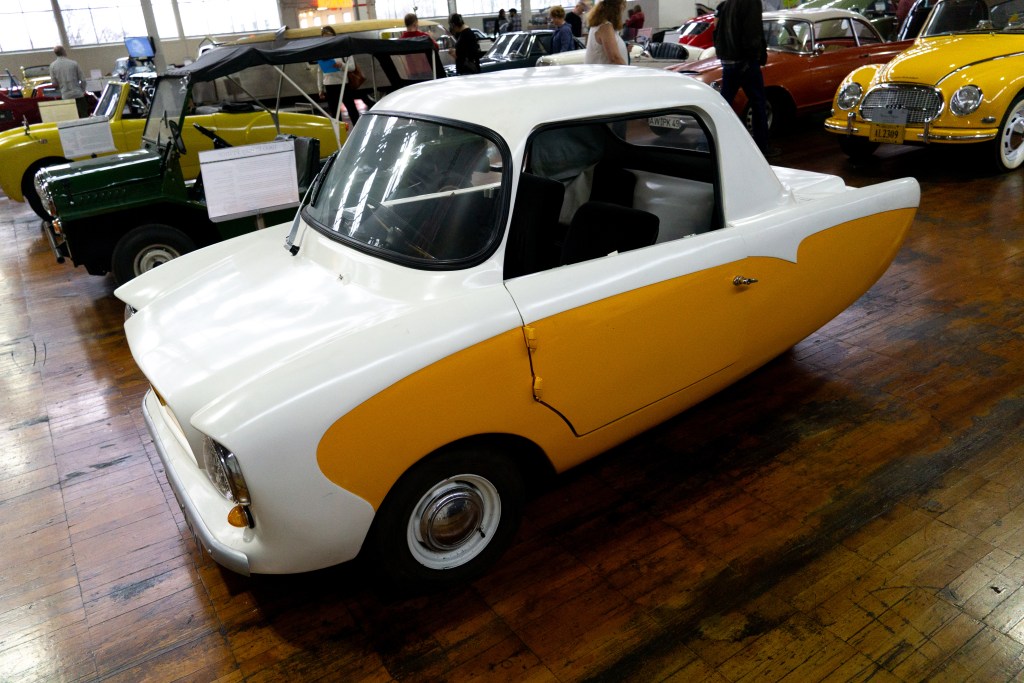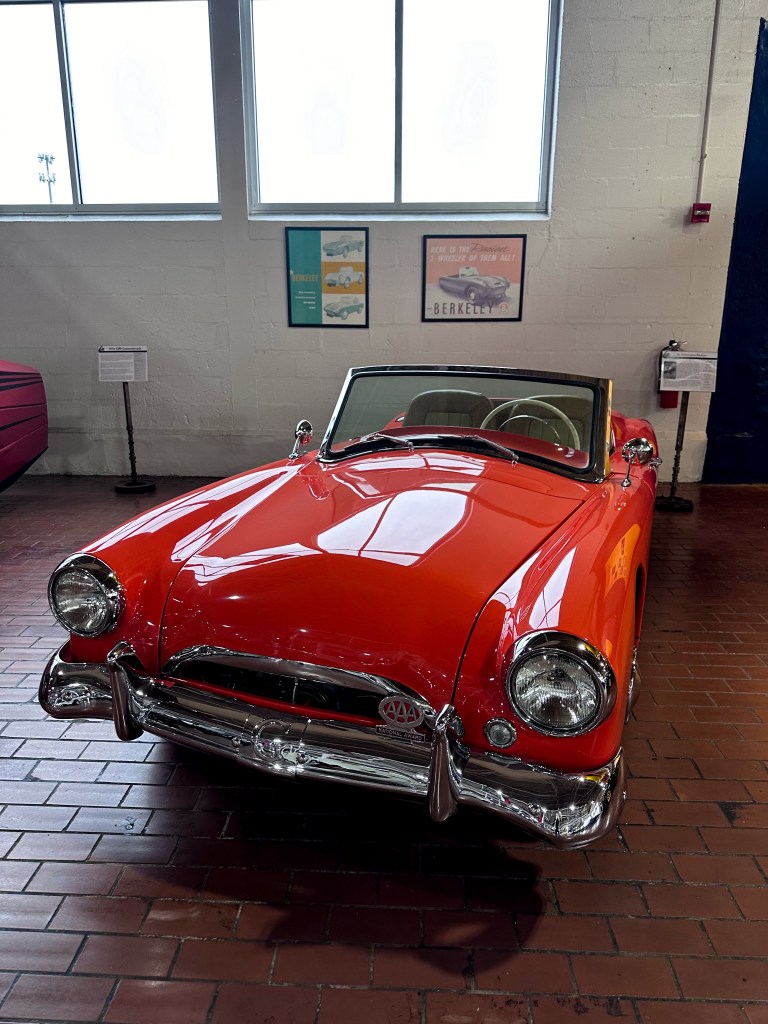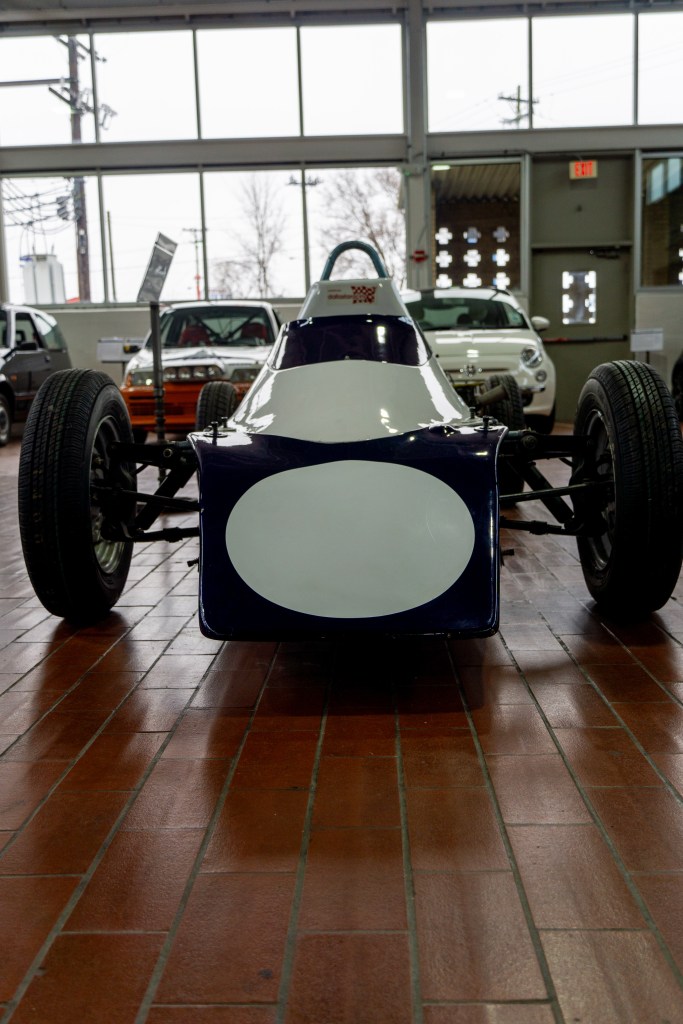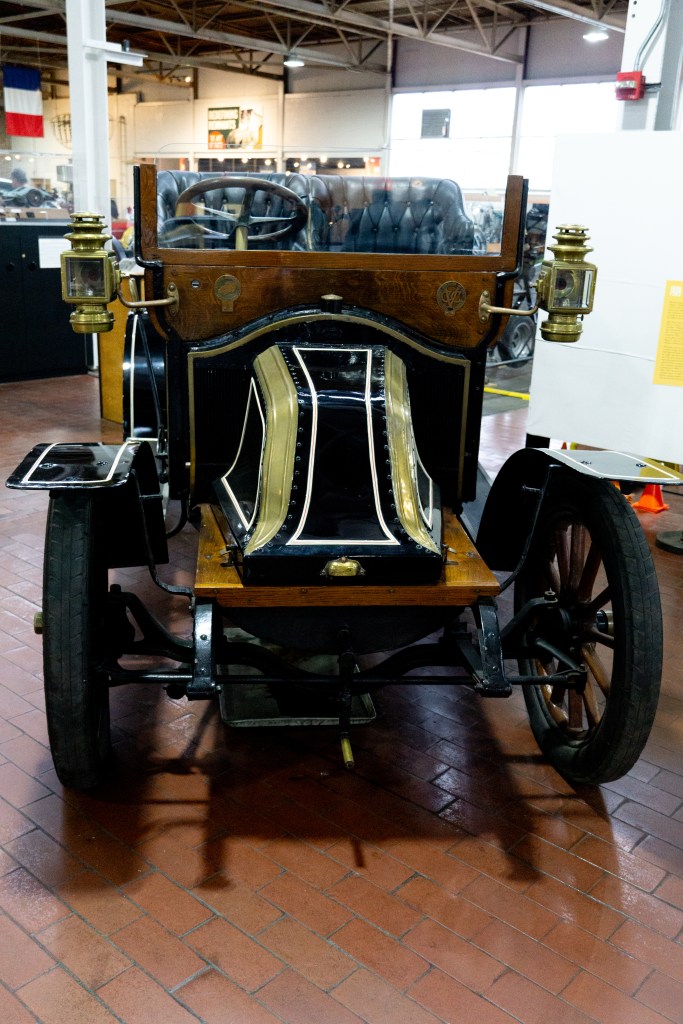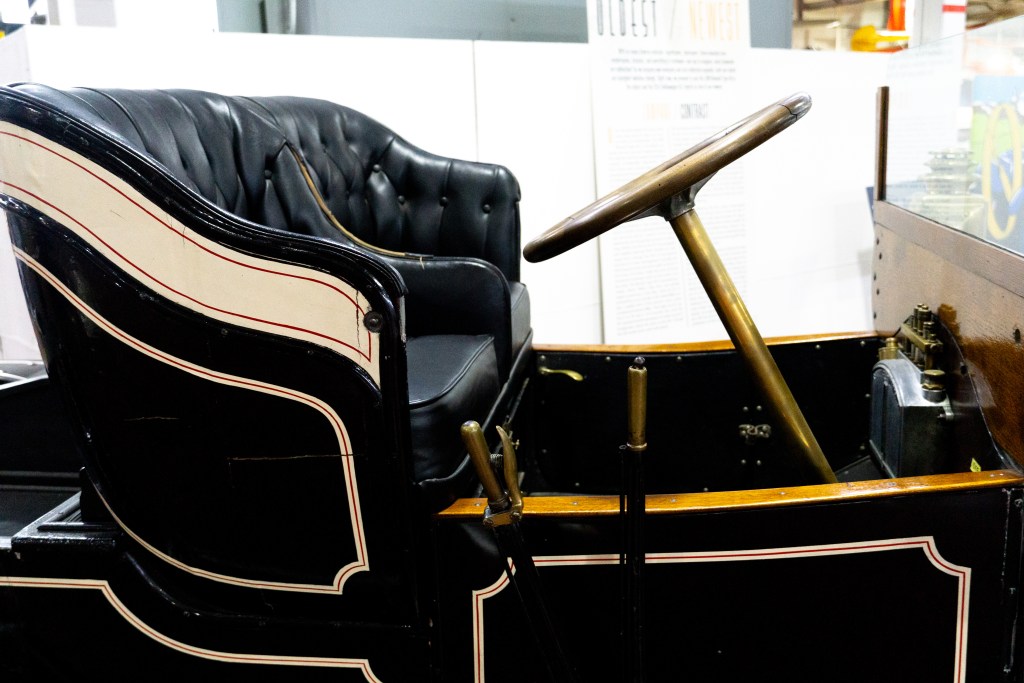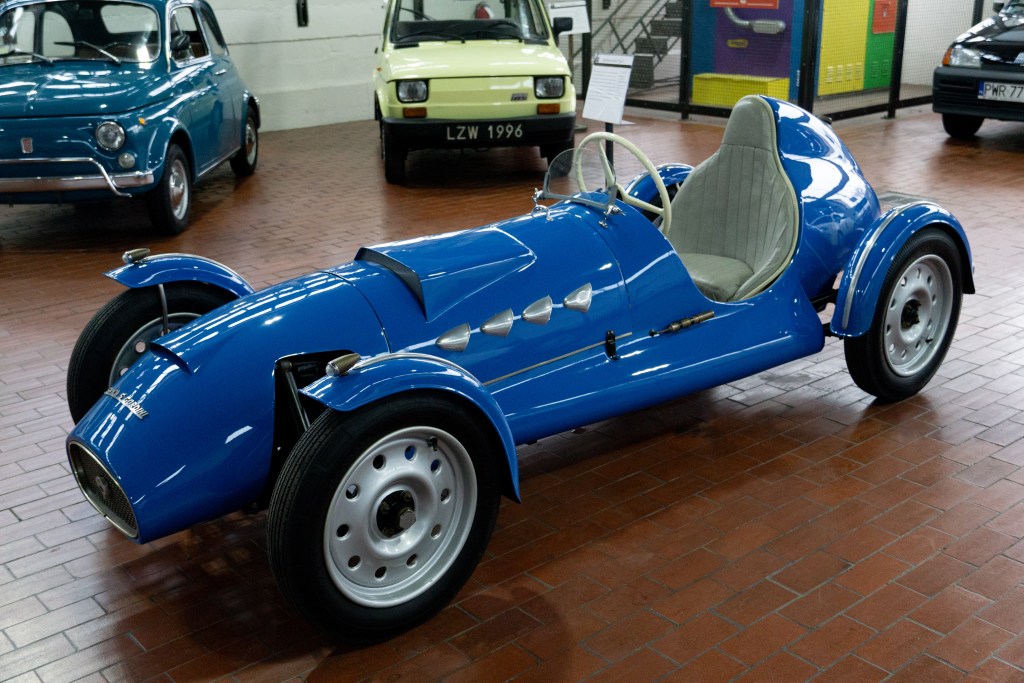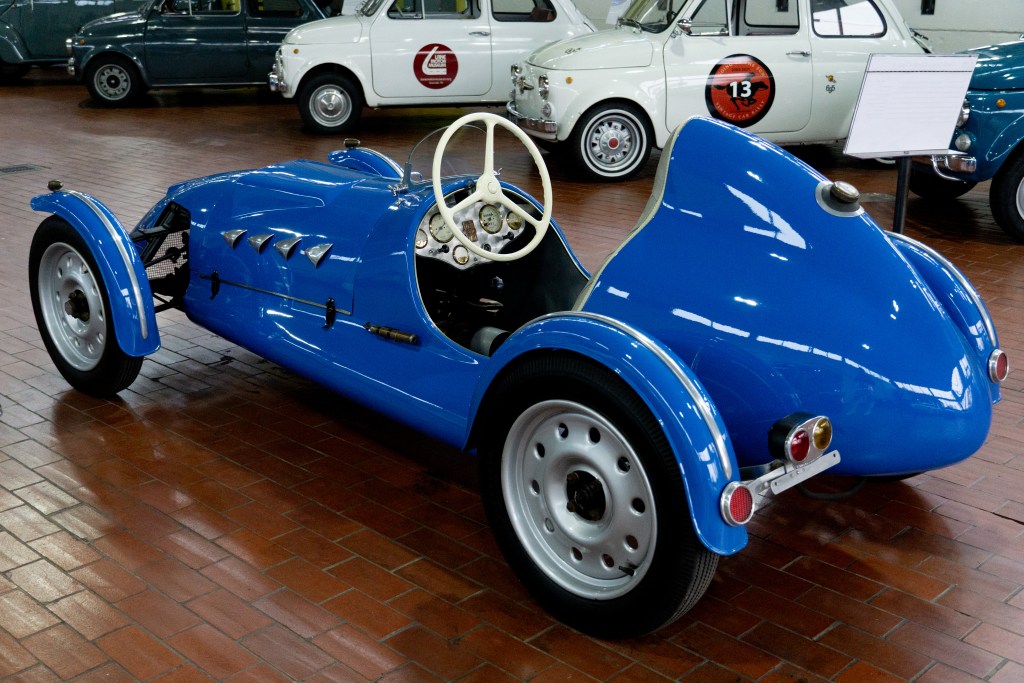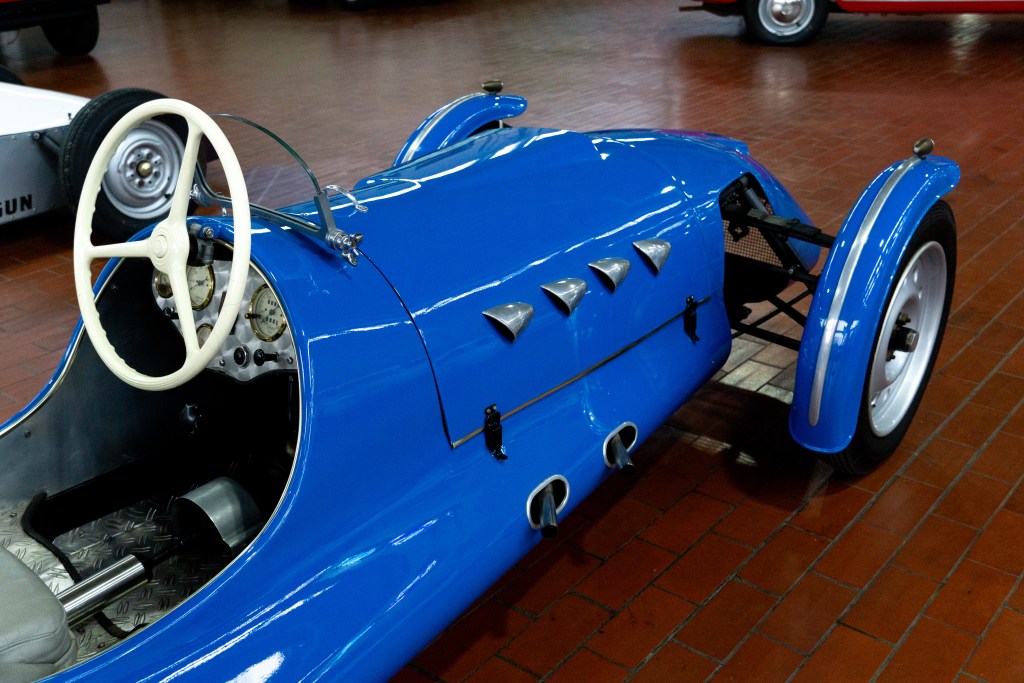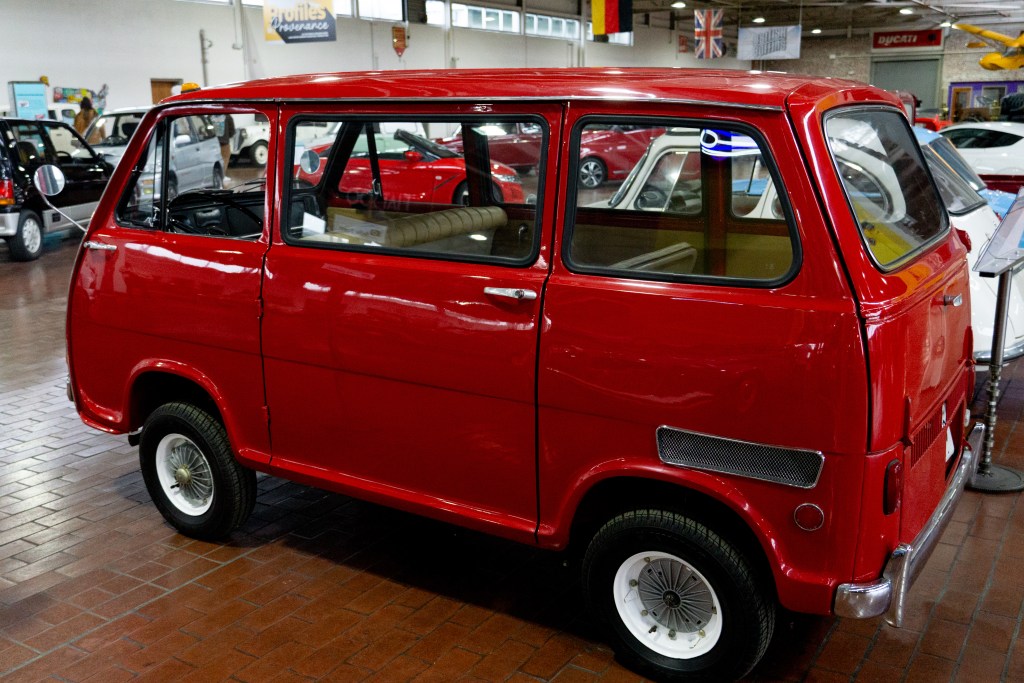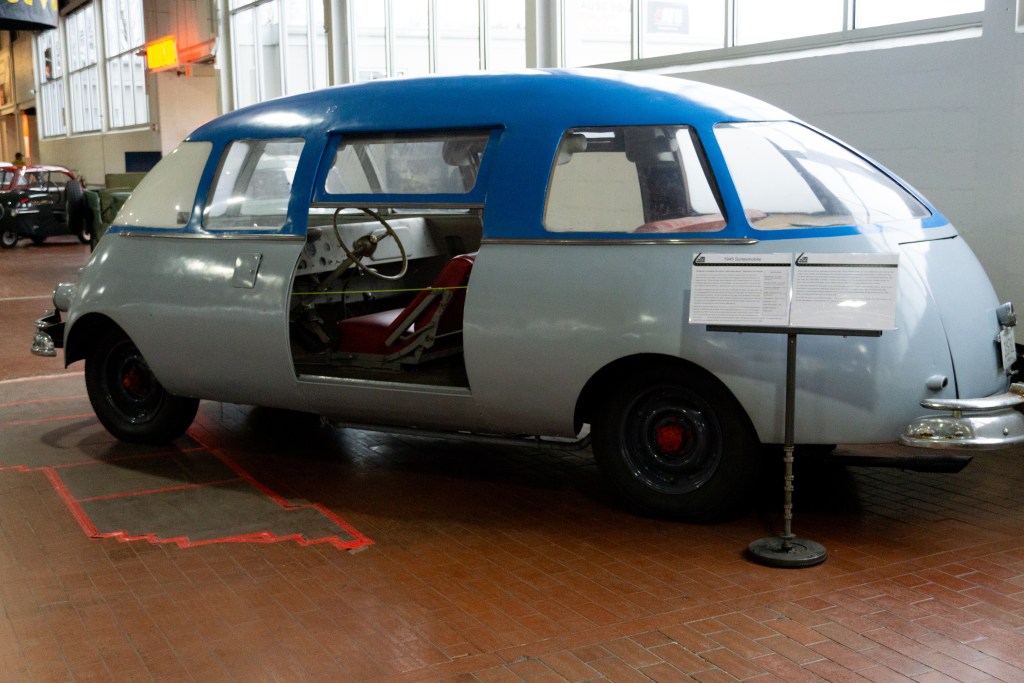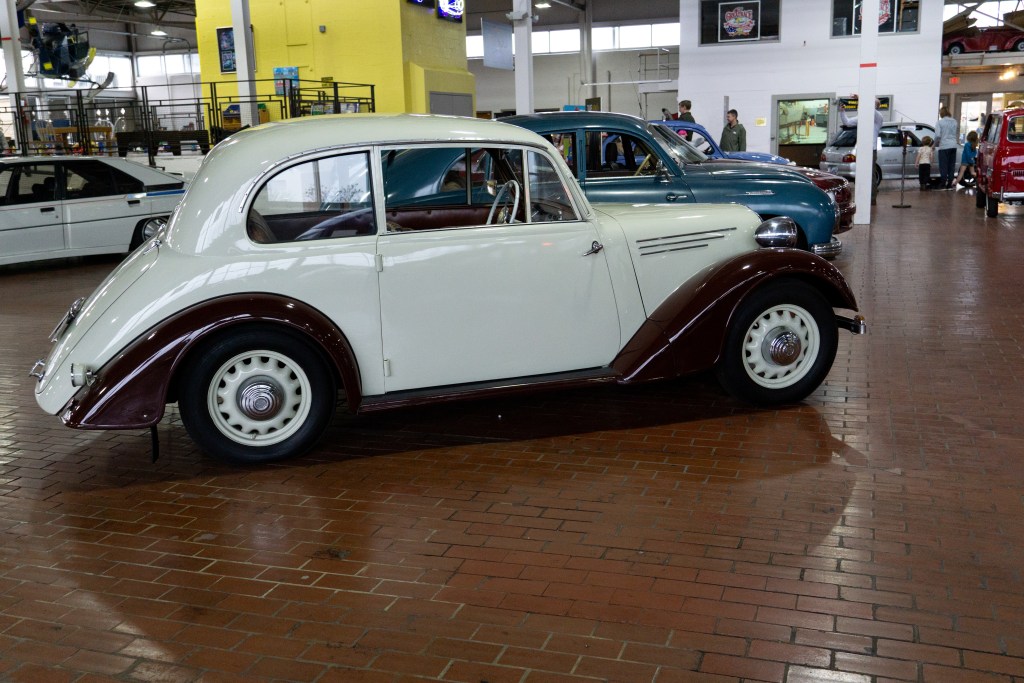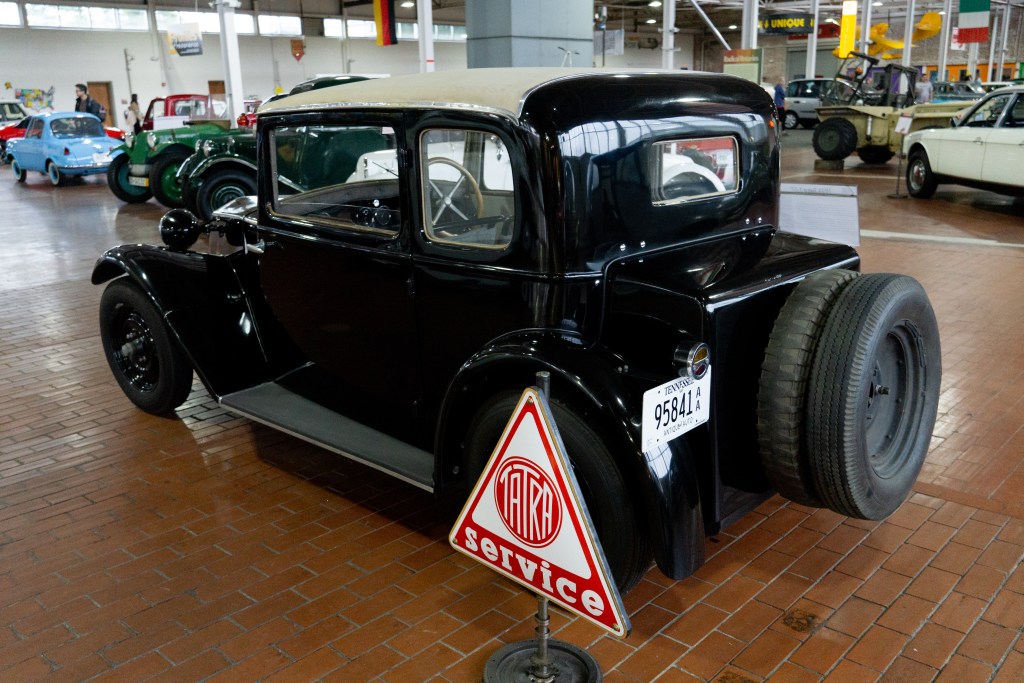The Lane Motor Museum is a unique automotive museum located in Nashville, Tennessee, dedicated to showcasing a diverse collection of rare and unusual vehicles from around the world. Established in 2004 by Jeff Lane, the museum features over 550 automobiles, motorcycles, and other modes of transportation spanning more than a century of automotive history. What sets the Lane Motor Museum apart is its focus on displaying vehicles that are innovative, quirky, or unconventional in design and engineering. Visitors to the museum can explore a wide range of vehicles, including microcars, amphibious vehicles, military vehicles, prototypes, and one-of-a-kind custom creations. Some of the highlights of the Lane Motor Museum’s collection include the 1920 Leyat Helico, a car with a propeller-driven rear wheel; the 1948 Davis Divan, a three-wheeled car with seating for six; and the 1970 Soviet-era ZAZ-965A, a compact car with a rear-mounted engine. In addition to its extensive collection of vehicles, the Lane Motor Museum offers educational exhibits, interactive displays, and special events that provide visitors with insights into automotive history, design, and technology. The museum also hosts workshops, lectures, and car shows throughout the year, engaging enthusiasts and the general public alike. Whether you’re a car enthusiast, history buff, or simply curious about unusual vehicles, the Lane Motor Museum offers a fascinating and entertaining experience that showcases the diversity and ingenuity of the automotive world.
Driven By Passion
The Lane Motor Museum began with the personal collection of Jeff Lane, who had a lifelong fascination with unique and unconventional vehicles. He started collecting cars in the 1970s, gradually amassing a diverse array of automobiles from around the world. In 2002, Jeff decided to share his passion with the public by establishing the Lane Motor Museum in Nashville, Tennessee. It started in a small building but quickly grew in popularity, leading to expansions and additions to the collection over the years. Today, the museum continues to showcase Jeff Lane’s passion for automotive history and innovation, attracting visitors from far and wide. The initial foundation was based on a donation of 70 vehicles in 2002. The majority of the cars have been acquired by the Museum since that time.
Lane Motor Museum: Fast Facts
- Largest collection of European cars and motorcycles in North America
- Over 550 vehicles in the collection (Approximately 150 on view at one time)
- Began as a private collection owned by Jeff Lane
- Lane Motor Museum is one of the few automobile museums in the U.S. to specialize in European cars (although the collection goes beyond just European cars)
- Includes many ‘quirkier’ models and modes of transportation that are not necessarily found in traditional ‘conventional’ car museums
- This is a working museum with the goal being to maintain all vehicles in running order.

* Information and descriptions on specific models found below provided by the Lane Motor Museum.
Standouts
Helicron- 1932
The Lane Motor Museum conducts a live demonstration daily at 11am where one vehicle is showcased. On the day I visited, I got to see the Helicron (above) up-close in demonstration which also included starting up the vehicle. It was an enthralling experience to see something so unique up-close AND fully-functioning!
Constructed in 1932, this one-of-a-kind, propeller driven car was discovered in a barn in France in 2000 having been placed there by the original owner in the late 1930s. Little could be seen of it through the rubble. It was completely rebuilt but many of the mechanical components are original, such as the frame, wire wheels, dashboard, steering wheel, steering gear, brake pedal, light switch, headlights, and the type plate. The wood frame was sandblasted and treated, the steering gear was rebuilt, and the interior was upholstered. The car steers with the rear wheels and only those wheels have springs. It is currently equipped with a Citroën GS engine with the propeller coupled directly to the crankshaft. The Helicron passed the French safety inspection in 2000 and is approved for use on their roads!
https://www.lanemotormuseum.org



2014 Volkswagon XLI
The Volkswagen XL1 was a two-seat, limited production, diesel-powered plug-in hybrid produced that WW introduced in 2014. Volkswagen was developing PHEV (Plug-in Hybrid Electric Vehicle technologies, and wanted to test them in real-world scenarios. While 250 examples were reportedly built, only 200 were made available for sale to the public. The XL1 car was touted as able to achieve 260 mpg, thanks to a combination of lightweight materials, a very aerodynamic body, and an engine and transmission designed and tuned for economy. The main body tub is carbon fiber, which helps the XL1 achieve an amazing 1,750 lb curb weight. Special attention was paid to the aerodynamics as well. In lieu of traditional side mirrors, so-called “e-mirror” cameras were affixed to the doors to reduce drag; monitor screens are mounted inside the door panels to provide rear visibility. Note the lack of a rear window. Spats cover the inset rear wheels, which helps the XL1 slip through the air at a spaceship-like drag coefficient of 0.186.
https://www.lanemotormuseum.org

Specifications:
- Manufacturer: Volkswagen A.G.
- Country of Origin: Germany
- Drivetrain Configuration: Rear mid-engine, rear-wheel drive
- Engine: (diesel) Water-cooled, 800cc, turbocharged two-cylinder, 47hp; (electric) 20 kW motor (27hp)
- Combined output: 51kw (68hp)
- Transmission: 7-speed dual clutch automatic
- Top Speed: 100 mph (electronically limited)
- Years of Production: 2014
- Number Produced: 250
- Original Cost: $146,000 USD
Tornado Typhoon- 1958

The Tornado Typhoon (named after the British fighter plane, not the storm) was created by Bill Woodhouse of Hetfordshire, England. Bill was dissatisfied with the kit car companies of the 1950s and the difficulty of finding commonly manufactured automobile parts that would fit them. He developed the Typhoon to use English Ford components, including the engine and suspension, with this Typhoon using parts for an English Ford Prefect. The Prefect was a well-known, mass-produced automobile in England. Engine and suspension components of the Prefect would be easy to source and fit in this new kit car. To keep things lightweight, sporty, and affordable, the body is produced out of fiberglass. It is believed that between 300-400 of the Typhoon car, both complete and kit form, were produced and sold to the public.
https://www.lanemotormuseum.org


Autozam AZ-1- 1993
“During Japan’s “Bubble Economy” (1986-1991), the nation’s car manufacturers enjoyed a bit of freedom in their car designs. Cars designed for smaller and smaller niche markets were financially feasible during this period. Nowhere was this more evident than in the kei class, or “light car”, segment”.
https://www.lanemotormuseum.org

Specifications:
- Manufacturer: Suzuki Motor Co., Ltd.
- Country of Origin: Japan
- Drivetrain Configuration: Mid-engine, rear-wheel drive
- Engine: Turbocharged, 63HP, inline 3-cylinder, 657cc, water-cooled
- Transmission: 5 speed manual
- Top Speed: 85 MPH
- Years of Production: 1992-1994
- Number Produced: 4,392
- Original Cost: ¥1,498,000 JPY;$12,400 USD
Fiat 500 Mare Lusso-1970
This nice little Fiat conversion is but one of several designs by Giovanni Vernagallo of Torino, Italy. Vernagallo’s company, Carrozzeria Holiday, takes cars such as the Fiat 500 and Punto, Citroen 2CV, Saxo, and AX, and Renault Twingo, among others, and transforms them into beach cars, cabrios, or pickups. “This exclusive model revives the legendary ‘60s, when the ocean’s beaches were in vogue.” (from the company’s website)
“Mare” indicates it is a seaside vehicle, and “Lusso” makes it a high-line car with a roll bar. The Lusso is fairly customizable for the new owner, with a choice of virtually any color under the rainbow for both interior and exterior. Prospective owners may provide a car, or Carrozzeria Holiday will source one for the conversion. Alloy body panels replace many of the donor cars’ panels, all “of the highest quality, hand-hammered by master Piedmont craftsmen, without the use of any molds.” Many of the new body panels are lined with sponge-foam for noise reduction.
Lusso cars include the aforementioned rollbar, plus two-tone interior in choice of color and material: leather, vinyl, cloth, or canvas, or in any combination. The car comes with full road approval for four passengers. “The mythical Fiat 500 is so transformed it becomes ideal for both holidays and recreation.” The “lateral protection chains” along each side are wrapped in foam and vinyl, and are attached by carabiner. The Lusso also includes a five-piece top and side curtains, providing some protection should one encounter foul weather.
https://www.lanemotormuseum.org






Specifications:
- Manufacturer: Fiat SpA (donor car); Carrozzeria Holiday (conversion)
- Country of Origin: Italy
- Drivetrain Configuration: Front-engine, rear-wheel drive
- Engine: 499cc air-cooled twin, 17.5 HP
- Transmission: 4 speed manual, plus reverse
- Top Speed: Approx. 70 mph
- Years of Production: 1957-75 (donor car)
- Number Produced: 3.6 million (donor car)
- Original Cost: €25,000 (conversion)
- Designer: Giovanni Vernagallo
Inter 175A Berline- 1956

Introduced as the Inter at the 1953 Paris Show by the distributors A. E. M. W. (Ateliers Electro-Mechaniques de la Seine of Saint-Ouen), this non-traditional auto-scooter was designed and constructed by French aircraft builders S.N.C.A.N. (Societe Nationale de Construction AeroNautique). Although three styles of the Inter were displayed at the 1953 show, only the Berline would go into full production. It is believed that between 1953 and 1956, the company only produced about 300 Inter 175A Berline (sedan) microcars and only around 30 still exist today.
Being designed by an aircraft company led to numerous aircraft features appearing in the vehicle – a steering handlebar mimics aircraft controls and the two passengers sit in tandem, much like some small aircraft. A helicopter-type starter, called the Westinghouse Gyrostarter, is used to start the engine. To operate the starter, the driver pulls a lever on the floor starting an electric motor that spins the engine’s flywheel; a clutch then engages the flywheel to the engine, and using the inertia of the spinning flywheel, the engine starts.
The exterior is also influenced by the aerodynamics of aircraft design and includes a hinged canopy top, which was also a signature of the Messerschmitt KR200 of Germany. Although the design of the Inter remained similar during production, it is said that no two Inters are identical.
https://www.lanemotormuseum.org

Specifications:
- Manufacturer: S.N.C.A.N. (Societe Nationale de Construction AeroNautique)
- Country of Origin: France
- Drivetrain Configuration: Rear-engine, rear-wheel drive
- Engine: Ydral, single-cylinder, two-stroke, air-cooled, 175cc, 8 HP
- Transmission: 3-speed manual plus reverse
- Top speed: Unknown
- Years Produced: 1953-1956
- Number Produced: 300
- Cost: unknown
Fiat 500 Coupe “Topolino”- 1936
Fiat began in 1899 when the Societa Aninima Fabbrica Italiana di Automobili – Torino was formed and has been building cars for over 100 years. Many consider the most famous Fiat to be the 500 “Topolino” (topolino translates to “little mouse”, a term of endearment the Italian people gave the small 500A). Launched in 1936, the new “baby” Fiat was the smallest mass-produced car of its time. With two seats, a 13bhp 569cc engine and a 6½ foot wheelbase, it was designed to bring motoring to the masses. It was a great success, and the initial version remained in production until 1948, with over 122,000 being produced. Although the Fiat 500 body style has changed over the years, Fiat produced a “Fiat 500″ well into the 1990s.
https://www.lanemotormuseum.org

Fascination-1969
Paul M. Lewis started an airplane company in Denver, CO in the 1930s, to construct VTOL (Vertical Take Off and Landing) aircraft. Shortly after, Lewis designed an economical car for the masses he planned on selling for $300. It took the form of a three-wheeled aerodynamic automobile called the “Airomobile”.

The first rendering of that body was penned by John Tjaarda, a Dutch automotive stylist and engineer who worked on projects such as the first Chrysler Airflow and the first Lincoln Zephyr. Tjaarda was intrigued with the research of Hungarian, Paul Jaray, the early aeronautical genius behind the aerodynamic teardrop shape of German Zeppelins, Audi, Benz, and Adler prototypes, as well as the Tatra T-77 and T-87.
In 1937, two former Franklin Automobile Co. engineers, Carl Doman and Ed Marks brought Lewis’s Airomobile to fruition. The vehicle was powered by a newly-engineered, air-cooled OHV flat-four with 57 hp, which drove the front wheels through Spicer constant velocity joints derived from Citroën components. The single rear wheel didn’t even have a brake. Lewis drove it all over the US proving its 43.6 mpg frugality. Despite restyling and reengineering, Lewis couldn’t raise sufficient financial backing for production. The only Airomobile prototype is in the National Automobile Museum in Reno, NV.
In the late 60s, Lewis established the Highway Aircraft Corporation at the former U.S. Army Depot near Sidney, Nebraska, and produced a rear propeller-driven prototype car. But an accident during its demonstration forced Lewis to abandon his idea and both the engine and propeller were removed. Instead, a Volkswagen, air-cooled Type 3 engine was installed in the tail end. To gain interest from the public it was put on display at several dealerships, including the Stapleton Airport in Denver. Though this prototype proved to be ultimately unsuccessful, the design inspired his next “Fascination” series of automobiles. It is not known why exactly Lewis was removed from the project by stockholders shortly after production started, but remarkably, the four additional Fascination cars still exist in private collections. The Fascination you see on display here is the Fascination #1 prototype.
https://www.lanemotormuseum.org


Specifications:
- Manufacturer: Highway Aircraft Corporation
- Country of Origin: USA
- Engine: Volkswagen Type 3, air-cooled, fuel-injected, flat-four engine, 1,493cc, 65hp
- Transmission: Automatic three-speed
- Top speed: 130 mph
- Years Produced: 1969-1974
- Number Produced: 5 total Fascinations
- Cost: Unknown
Ferves Ranger 4×4- 1965
Presented at the 1966 Turin Motor Show, the Ferves (Ferrari Veicoli Speciali) Ranger is an attractive, compact all-terrain vehicle. The rear-mounted engine is a Fiat 500 unit, the all-independent suspension came from the Fiat 600, and after 1967, all four wheels are driven. The open body work features a folding windscreen and doors that can be fixed in the open position. It seats four passengers, but was also available with just two seats and a cargo area.
https://www.lanemotormuseum.org

Fiat Baldi Frog – 1975

This fiberglass-bodied, Fiat 500-based microcar was built in San Remo, Italy by Carrozziere (Coachbuilder) G.A.M.C. Baldi. Baldi produced several different Fiat and Renault-based models, but the Frog was by far the most popular. First shown at the 1973 Paris Salon, Baldi’s intent was to produce a practical car with the smallest possible size, as a solution to urban traffic congestion. Being only 85 inches (215cm) long, it is a whole 4 inches (10cm) shorter than a Smart car, and 20 inches shorter than the Fiat 500 upon which it is based. Three engines were offered, ranging from 125cc to 595cc. This Frog is a “Rally” edition with the largest 595cc engine. Built for only two years, the Frog went out of production after only 300 were produced.
https://www.lanemotormuseum.org

Citroën Berline 11 Gazogene- 1938
During the German occupation of France in World War II, gasoline was scarce, expensive, and often unavailable. Several companies offered systems for a vehicle to be powered by alternative fuels such as wood, coal, or charcoal. This car has been converted by Fap Elgazo Tarbes to run on coal. Adaptions were necessary to alter the vehicle from gas power to coal burner. The two large cylindrical containers under the front fenders are filled with coal and ignited. In about 30 minutes, enough methane gas would rise out the tops of the containers to feed the special carburetor, making the car run. Using the coal system reduced horsepower by one-third which reduced the top speed to about 45 mph (depending on how well the coal was burning). Range was about 30 miles before you had to stop and add more coal. Only a few of these conversions survive.
https://www.lanemotormuseum.org

Coronet- 1958
The Coronet is an attempt to offer full-size car looks in a three-wheeled microcar. It came as a two- or three-seater convertible. The engine is in the rear, sitting in front of the one rear wheel. It was designed by David Gottlieb and Coachbuilders’ James Whitson & Company provided the fiberglass body as well as made and assembled most of the rest of the car. The Coronet’s chassis used suspension and steering components from the standard 8. The Coronet maintains approximately 60 miles to the gallon. When it appeared in 1957, it was advertised as “the world’s best three-wheeler.”
https://www.lanemotormuseum.org

Gallery


Visiting Lane Motor Museum
2024 HOURS*: *Lane Motor Museum closes each year on New Year’s Day, Thanksgiving and Christmas.
- Monday………….10am-5pm
- Tuesday………….CLOSED
- Wednesday…..CLOSED
- Thursday………..10am-5pm
- Friday………………10am-5pm
- Saturday…………10am-5pm
- Sunday……………10am-5pm
VEHICLE DEMONSTRATIONS EVERY THURSDAY THROUGH MONDAY AT 11AM! FREE WITH ADMISSION!
2024 ADMISSION PRICES:
- Adults (18-64)…….$15
- Seniors (65+)……….$10
- Youth (6-17)………….$3
- Age 5 & Under……Free
- Members……………..Free

LOCATION (Free parking):
702 Murfreesboro Pike, Nashville, TN, 37210
PHONE: (615) 742-7445
*Lane Motor Museum closes each year on New Year’s Day, Thanksgiving and Christmas.
Lane Motor Museum: For Kids
Lane Motor Museum has a large designated play area for children which allows kids to have lots of hands-on interactive learning. Lane Motor Museum is dedicated to providing visitors of all ages rich learning experiences. In addition to the kids area, Lane Motor Museum hosts a variety of demos and other community outreach events that are great for the whole family. Learn more and see upcoming events here.
Conclusion
As aforementioned, the museum features over 550 automobiles with around 150 on display in the main gallery at any given time (the rest in the vault which is accessible through purchasing a vault tour which are available on weekends). Although I highlighted details on a few vehicles above and am sharing photos of many more, I’d be doing you, my readers, a disservice if I didn’t tell you that the actual experience, pales in comparison to what I can share with you. So as always, I hope this provides you with a little taste of an experience that I have been fortunate enough to have, and you can too!



